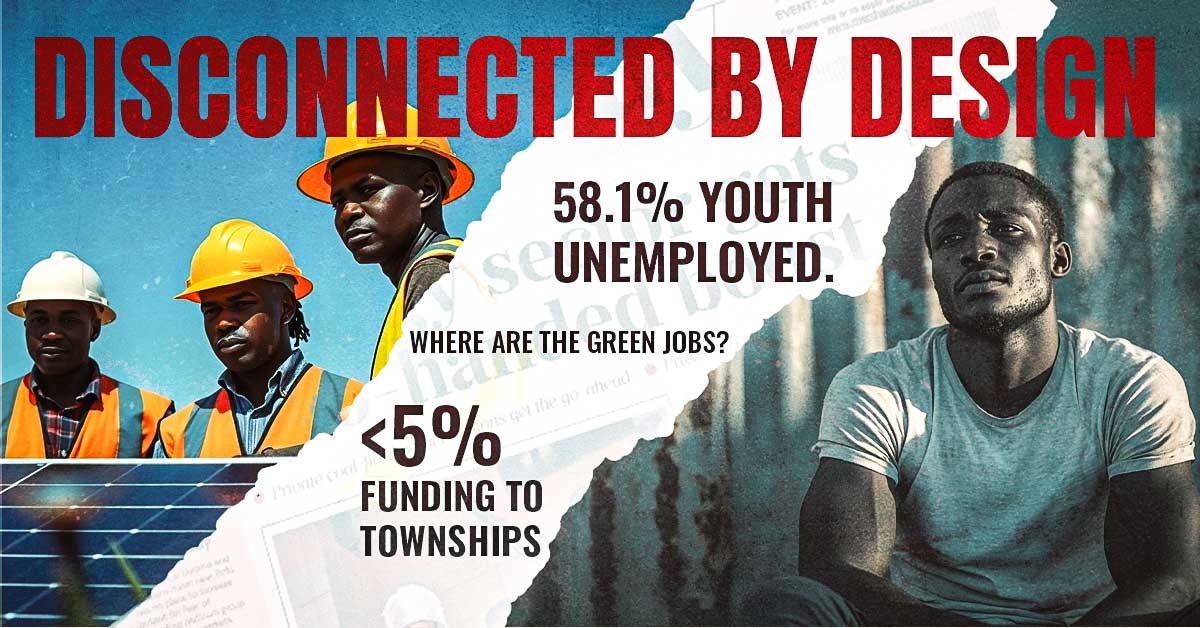Youth Unemployment: The Disconnect Between SA’s Green Economy Promises and Township and Rural Realities

The Data: Green Growth vs. Spatial and Social Exclusion
1. Geographic Disparity:
Over 85% of large-scale renewable energy projects (solar, wind) are concentrated in rural areas like the Northern Cape and Eastern Cape (DMRE, 2023). However, jobs often don't go to local rural youth. Urban townships, despite high unemployment, receive minimal direct investment.
Example: The Renewable Energy Independent Power Producer Procurement Programme (REIPPPP) has created 50,000+ jobs since 2011, but fewer than 10% went to urban township residents, and local hiring in rural project areas remains low (AIDC, 2023).
2. Skills Mismatch & Training Gaps:
Government-funded training programs (e.g., SAYouth.mobi) often focus on digital literacy and high-tech roles. Yet, 67% of township and rural youth lack reliable internet or devices (Stats SA, 2023), excluding them from these opportunities.
Missing Practical Pathways: Training aligned with accessible local green careers is underdeveloped. Needed pathways include:
- Renewable Energy Technicians: Solar panel/wind turbine installation & maintenance.
- Sustainable Agriculture: Organic farming, permaculture, agroforestry.
- Waste Management: Reduction, recycling, waste-to-energy.
- Green Building: Sustainable construction, retrofitting.
- Eco-Tourism: Management, conservation, community initiatives.
- Environmental Educators: Community awareness.
Training formats needed: Accessible Vocational Training (short courses, certificates), Hands-on Apprenticeships, and Practical Entrepreneurship Support.
3. Contractual Instability:
Most green jobs remain temporary construction roles (e.g., solar farm installations), with only 12% offering permanent employment (ILO, 2023), failing to provide long-term security.
Barriers to Inclusion: Beyond Skills
- Transport Costs: Daily commutes to distant projects are unaffordable for youth earning minimum wage (R27.58/hour).
- Bias in Hiring: Private contractors often prioritize experienced workers or those with tertiary qualifications, excluding matriculants and local residents.
- Lack of Localized Investment: Township-focused and rural community-based initiatives (e.g., solar microgrids, community gardens, local recycling plants) receive less than 5% of JET-IP funding (National Treasury, 2024).
- Top-Down Approach: As noted, the current JET-IP model is often prescriptive and exclusionary, lacking true community participation essential for "Livable and Resilient" communities.
Existing Solutions & Promising Models (What's Working - and Needs Scaling)
1. SA Youth Employment Service (YES): Partnered with companies like Mzansi Energy to place 2,000+ township youth in solar installation roles. Challenge: Scaling beyond pilots to rural areas.
2. City of Cape Town's Urban Wastepreneur Programme: Trains youth in recycling and waste management, creating 500+ jobs since 2022. Model for local, practical skills.
3. Gauteng's Township Eco-Tourism Hubs: Initiatives like the Soweto Green Trail leverage heritage sites. Needs consistent funding.
4. Emerging Innovations (Requiring Support):
Youth-Led Cooperatives: In agriculture, renewable energy, eco-tourism.
Community-Based Projects: Local conservation, sustainable livelihoods, gardens.
Digital Solutions: Mobile apps for sustainability, disaster management, market access (requires parallel digital literacy investment).
Innovation Hubs: Spaces for youth to develop/test green tech solutions.
Solar-Powered Community Solutions: Addressing local energy poverty & creating maintenance jobs.
To align green growth with equity and build Livable and Resilient communities, V20MM advocates for:
1. Localized Funding & Projects: Redirect 30% of JET-IP budgets to urban township AND rural community projects (e.g., solar-powered community halls/clinics, local recycling plants, microgrids, sustainable agriculture co-ops, eco-tourism ventures). Prioritize community ownership models.
2. Relevant, Accessible Training: Expand in-person, practical skilling (rainwater harvesting, retrofitting, sustainable farming, basic renewable tech maintenance) through community colleges and mobile units. Integrate entrepreneurship support.
3. Inclusive Policy Reform:
Enforce hiring quotas for local township and rural youth in provincially and nationally funded green projects.
Mandate meaningful community participation in planning local green initiatives.
Embed the "Livable and Resilient Communities" principle into JET-IP implementation.
Conclusion: Proximity, Participation, and Resilience are Non-Negotiable
South Africa's green economy cannot succeed or be just if it sidelines the communities most affected by unemployment, energy poverty, and climate vulnerability. As the Climate Commission states, "A just transition must be participatory, not prescriptive." For townships and rural areas, this means local jobs, accessible training, and community-led initiatives that build genuine resilience. It means moving beyond distant megaprojects to empower youth where they live, creating sustainable livelihoods that contribute directly to making their communities more livable and resilient in the face of climate change and economic uncertainty. Promises must materialize into tangible opportunities on the ground.
Sources
1. Stats SA Quarterly Labour Force Survey (Q1 2024)
2. Department of Mineral Resources and Energy (DMRE, 2023)
3. International Labour Organization (ILO, 2023)
4. Alternative Information & Development Centre (AIDC, 2023)
